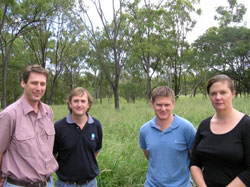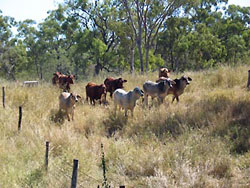



The Quest for a 'Green' Agricultural System
AUSTRALIA - CSIRO research underway in Central Queensland’s cattle country is investigating whether the integration of trees, pasture and livestock into a single agricultural system will produce greater net returns for producers and the environment.The ‘silvopastoralism’ system is gaining worldwide attention as a potentially profitable land-use practice, particularly following the emergence of new market opportunities such as carbon trading.
CSIRO Livestock Industries’ (CLI) project leader and resource economist, Mick Stephens, says that since the 1960s a significant proportion of trees have been removed from the open woodland zones in northern Australia to support the pastoral and cropping industries.


“In the Central Queensland region, over 4.5 million hectares of woodland vegetation has been cleared,” Mr Stephens says. “Given the environmental/economic problems associated with climate change, we now have an opportunity to investigate whether silvopastoralism can provide some of the answers.”
“The environmental benefits would include increased: soil and water retention, nutrient re-cycling and carbon sequestration. Emerging incentive schemes for the sequestration of carbon in forests, and forecast increases in the prices paid for forest products, may act as a driver for silvopastoralism.”
The project will utilize earlier research by the Queensland Department of Natural Resources and Water into some of the competitive and stimulatory effects of wide rows of trees on pasture production.
The designs being evaluated include planting well-spaced rows of high-yield eucalypt trees – and 20 to 100m wide rows of native woodland regrowth trees – on pasture lands.
“It is a complex agro-ecological system so we need an economic appraisal that considers the interactions between tree and pasture growth and the relative costs, prices and yields for livestock and forest products,” Mr Stephens says. “Emerging opportunities for producing bio-fuels and participating in carbon trading schemes are all exciting possibilities.”
Modelling techniques will be employed at a farm level to assess the sensitivity of silvopastoral systems to current and projected cost, price and yield scenarios and help identify under what circumstances these systems are likely to be a profitable land use.









